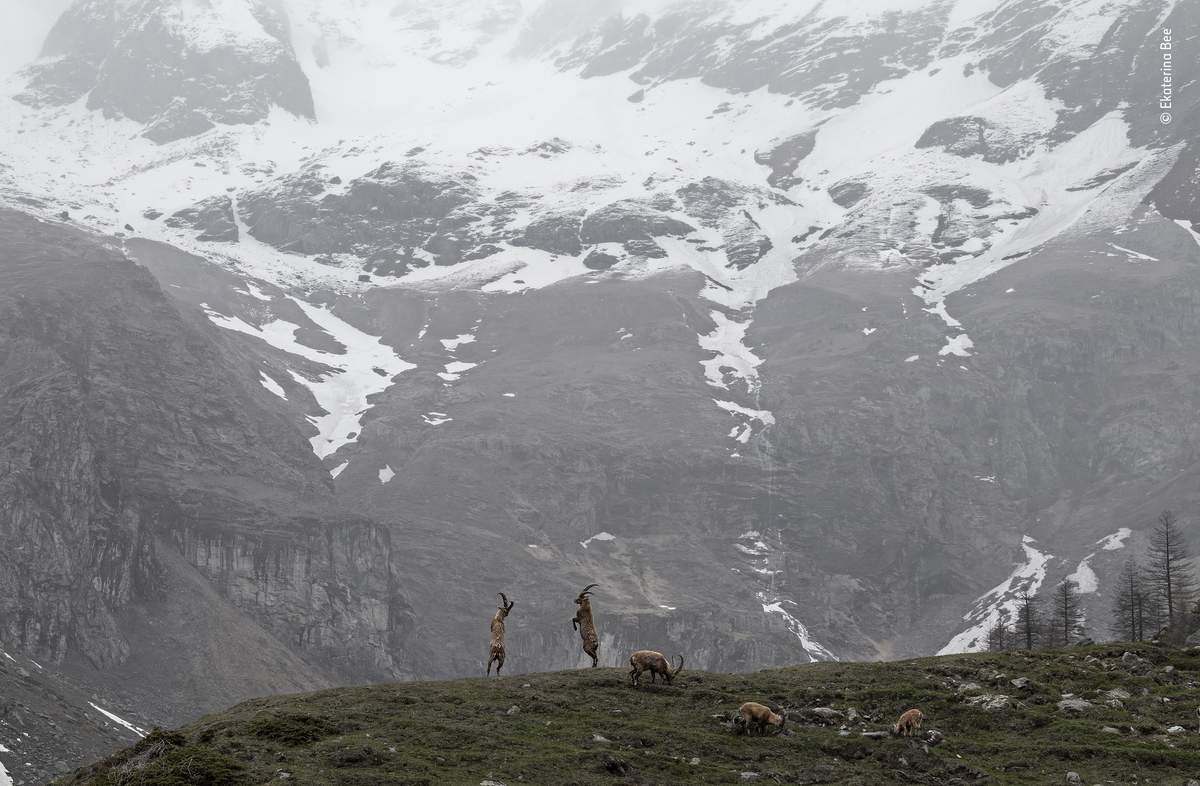The Natural History Museum in London holds a yearly contest for the Wildlife Photographer of the Year. This year, the contest had 38,575 entries from around the world. Here are some of this year’s best pictures, and the stories behind them.
The photographs in this year’s contest are amazing in many different ways. Some show animals that are rarely seen. Others present animals acting in surprising ways. And some just capture a perfect moment.
The grand prize this year was won by Karine Aigner of the United States for an incredible shot of a buzzing ball of cactus bees.

(Source: Karine Aigner / Wildlife Photographer of the Year .)
Cactus bees live underground. As their name suggests, they live mainly off of cactus plants. The picture was taken in southern Texas in May, when the bees had just come out of their tunnels and were ready to mate.
The “ball” was a lot of male bees fighting to win a single female bee. Ms. Aigner says that soon after the picture was taken, the female flew off with one of the males.

(Source: Dmitry Kokh / Wildlife Photographer of the Year .)
Dmitry Kokh of Russia won the award for “Urban Wildlife”. His picture of polar bears in an old house was taken on an island in the Chukchi Sea, between Russia and Alaska.
Mr. Kokh was on a boat when he noticed polar bears walking through an area where no one had lived for years. To get the picture without disturbing the bears, he used a quiet drone.

(Source: Fernando Constantino Martínez Belmar / Wildlife Photographer of the Year .)
Fernando Constantino Martínez Belmar of Mexico had to wait in the dark in a cave filled with bats and snakes to get his image. Yucatan rat snakes hang from cracks in the ceiling of the cave, hoping to grab one of the many bats that are flying out of the cave for the night.
Using a red light that wouldn’t disturb the animals, Mr. Martínez Belmar waited until just the right moment to snap the picture. He won the Amphibian and Reptile Behavior prize.

(Source: Nick Kanakis / Wildlife Photographer of the Year .)
Nick Kanakis of the US snapped this picture of a grey-breasted wood wren – a bird that spends most of its time on the ground. The bird has its ear to the ground, listening for insects to catch and eat.
After spotting the bird looking for food farther away, he stayed very still, hoping it would come closer. When it did, he was able to get the shot, which won the prize for Bird Behavior.
Young Competition
The Young Wildlife Photographer of the Year is a separate contest for people under 18. The pictures are judged in three separate age groups: 10 and Under, 11-14, and 15-17.

(Source: Ekaterina Bee / Wildlife Photographer of the Year .)
Ekaterina Bee of Italy won the 10 and Under prize for Young Wildlife Photographer of the Year. She caught this picture of Alpine Ibex in the mountains near Italy’s border with France. She was out for a trip with her family in the spring, when she noticed two male Ibex standing on their rear legs, fighting.
Alpine Ibex have recovered well after nearly disappearing from the area in the early 1800s. Now, after decades of protection, there are more than 50,000 of the animals.
Did You Know…?
Wildlife Photographer of the Year is developed and produced by the Natural History Museum, London. The museum will be accepting photos for next year’s contest until December 8. If you like to take pictures of nature, it’s time to get busy! Even if you don’t take pictures, you may want to have a look at more of the amazing photos.
